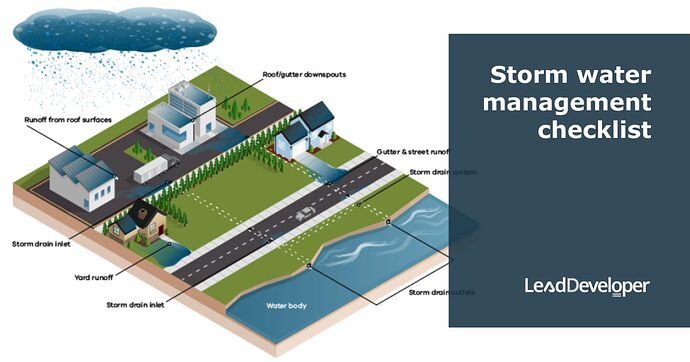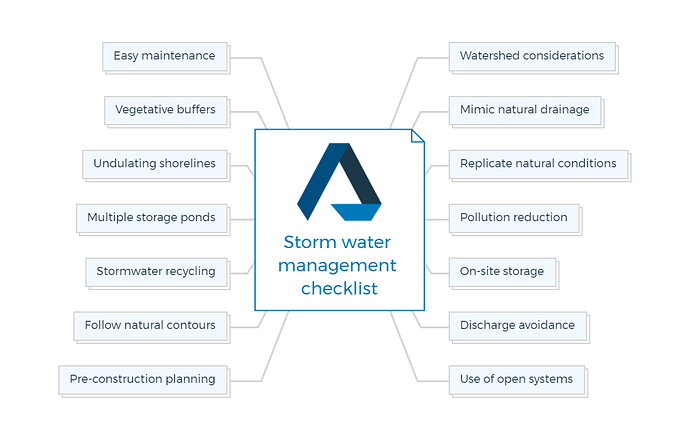1. Watershed considerations
- Determine the watershed your property is a part of and consider its natural drainage patterns.
2. Mimic natural drainage
- Design stormwater management features to mimic the natural drainage patterns of the site.
3. Replicate natural conditions
- Ensure that the volume, rate, timing, and pollution load of stormwater closely approximate the conditions of the undeveloped site.
4. Pollution reduction
- Identify and reduce existing pollution loads when necessary to meet acceptable standards.
You are missing out if you haven’t yet subscribed to our YouTube channel.
5. On-site storage
- Maximize on-site storage of stormwater to reduce runoff and flooding.
6. Discharge avoidance
- Depending on local regulations, avoid direct discharges of stormwater into surface water or groundwater.
7. Use of open systems
- Prioritize the use of open, natural systems wherever feasible in stormwater management.
8. Pre-construction planning
- Plan and install stormwater management systems before commencing construction activities.
9. Follow natural contours
- Locate stormwater management systems in alignment with the natural contours of the land.
10. Stormwater recycling
Consider the possibility of recycling stormwater for applications like golf course irrigation and landscaping.
11. Multiple storage ponds
Use multiple storage ponds to accommodate varying stormwater volumes and reduce the risk of flooding.
12. Undulating shorelines
Design swales, retention, and detention systems with undulating shorelines to slow water flow and minimize erosion.
13. Vegetative buffers
Incorporate vegetative buffers along shorelines to filter pollutants and protect water bodies.
14. Easy maintenance
Design stormwater management systems for easy maintenance, including access for cleaning and repairs.


